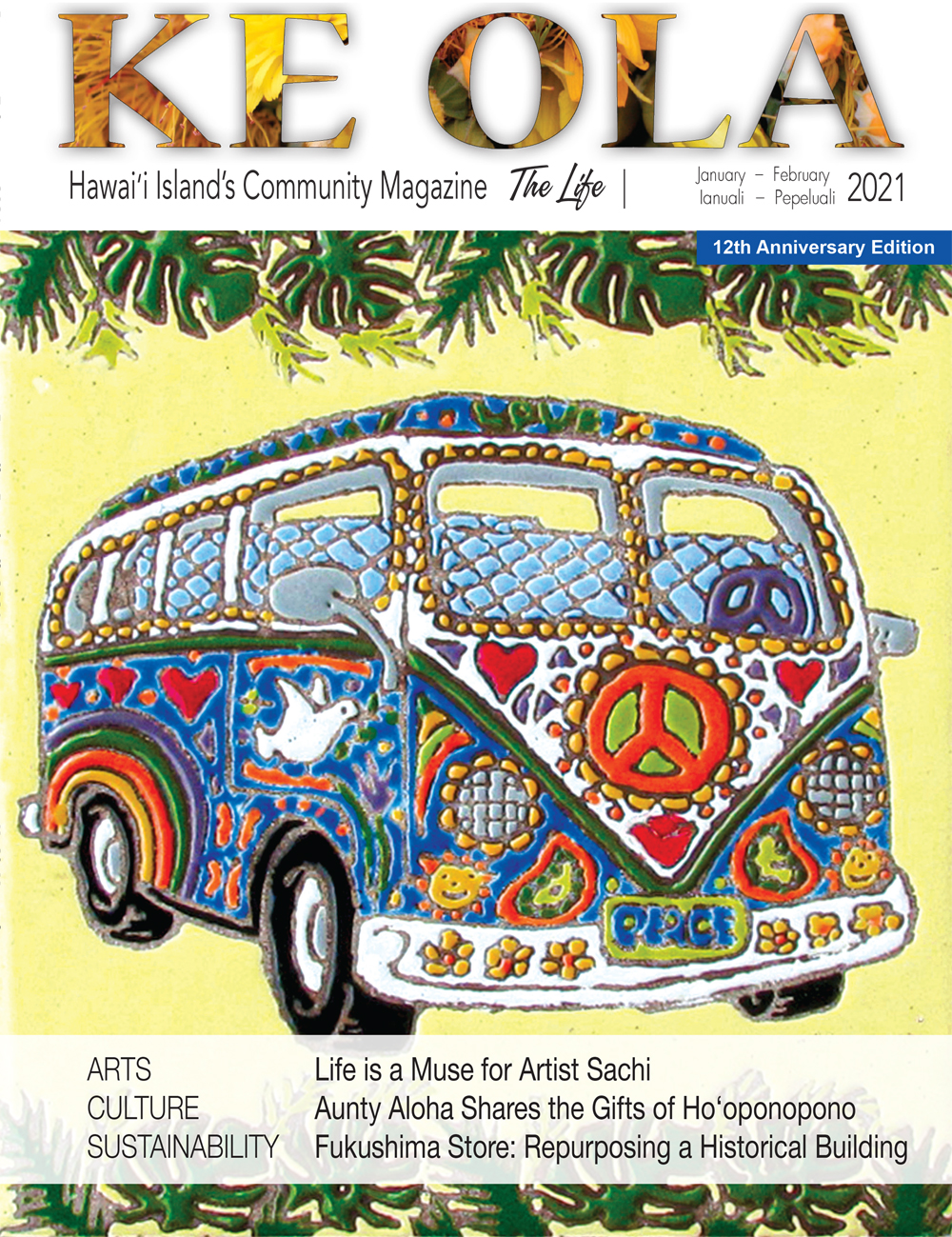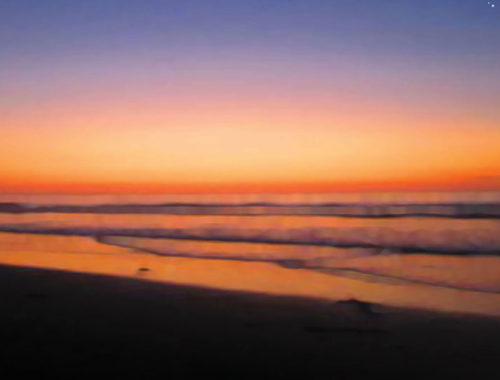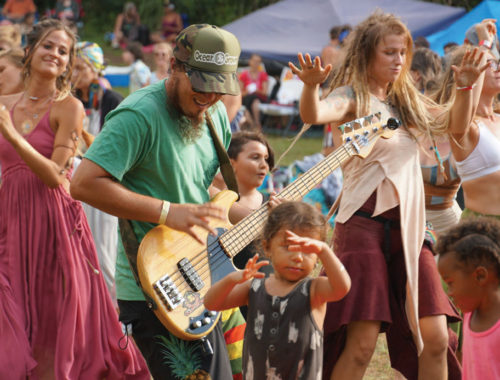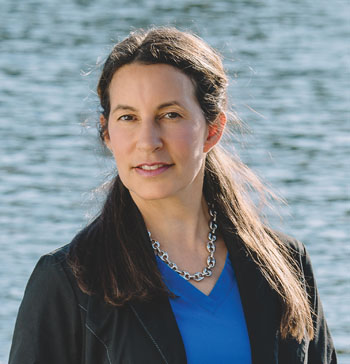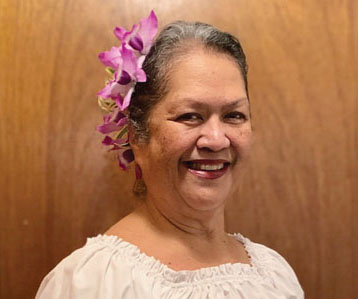
Aunty Aloha Shares the Gifts of Ho‘oponopono
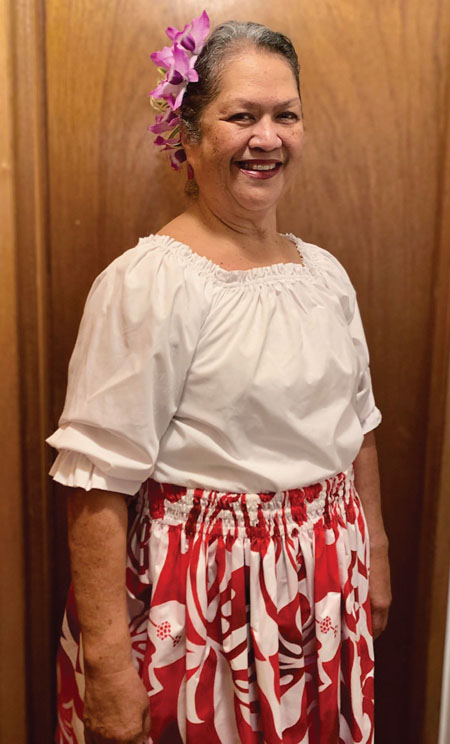
By Catherine Tarleton
It’s all experience.
Have you ever thought you were doing something for somebody, and it turns out they’re actually doing something for you? That’s what happened with this writer and Allysyn “Aunty Aloha” Ahuna Bezilla, grandmother, devout Christian, hula student, and teacher of ho‘oponopono, the Hawaiian family healing process. These days her classes are on Zoom, as is our conversation.
“You cannot eat the whole loaf of bread at once,” Aunty Aloha says. “Take it one slice at a time. One day you are going to feel a little more relaxed, more okay with yourself. That’s accomplishment.” As she speaks, I can feel the worries of these troublesome days start slipping away, like untying knots before you kick your shoes off. I take this as an accomplishment.
Aunty Aloha officially started learning about ho‘oponopono in the 1990s when she worked with Howard Pe‘a and Abbie Napeahi at Alu Like;* however, the process started when she was a child. “Abbie introduced me to ho‘oponopono and I started learning, not realizing that our mom and dad had been doing ho‘oponopono with us every day,” says Aunty Aloha.
“We would do family conferences, talking story with each other, conflict resolution. Abbie reinforced what I was trained to do from my parents.”
The word ho‘oponopono literally translates as “setting to right,” from ho‘o (to make) and pono (right, correct); ponopono (doubly so).** Traditionally, one of the family kūpuna (elders) would lead the process.
It’s hard to imagine Aunty Aloha’s busy family of nine children, settling down with their parents long enough to do this quiet work in their Keaukaha household. “Our home was like Grand Central Station,” she says. “Mom made sure there was always a big pot of something on the table, rice, and gravy. Maybe you got one piece of meat, vegetables, and lots of gravy. There was always bread on the table, butter and jelly,” she says. “The environment was so loving…I’m grateful for loving parents, Albert Keokialii Ahuna, Sr., who everyone called ‘Alapaki’, and my mother, Eleanor Kalawai‘akamali‘iwahineli‘ili‘i Simeona Ahuna.”
Aunty Aloha says when the family had concerns to be addressed, their parents would call everyone to a meeting. The meeting was infused with aloha and enriched with values that help keep harmony in the individuals, and the ‘ohana as a whole.
“Aloha was the main key,” Aunty Aloha says, “and so was pule [prayer]. You pule when you go to sleep, you pule when you wake up, you pule when you eat, you pule when you get in trouble. It’s all about connection with ke Akua [God, Higher Power].”
Mom and dad Ahuna also taught the values of aloha kekahi i kekahi (love for oneself and for all), kōkua (helping each other), kuleana (understanding family and community responsibility), ha‘aha‘a (humbleness), mālama (caring), hō‘ihi (respect for self and others). “We didn’t know that our meetings were ho‘oponopono,” she says.
Her father was a tugboat captain, and a musician with the Ahuna Family on his nights off. In the summer, he piled the whole ‘ohana—plus neighbors and friends—into the truck for a two-week camping vacation. “Our motto was ‘find an empty space and if you can fit, you can go,’” she says.
“My father made sure we all stayed together. He was a straight shooter; he wanted you to know his intentions, but he delivered with love. My dad was like that. And he didn’t hold grudges,” Aunty Aloha says. “Today, we always try to take care of each other, be straight shooters. Be like dad.”
She raised her first child as a single mom, then married George Andrew Bezilla and raised four more children with him. When her youngest went to pre-school, she went back to college, and earned an associate’s degree in early childhood education. She signed on with Alu Like, working with adjudicated youths on education, pre-employment training, and job seeking, alongside Uncle Howard and Aunty Abbie.
After their training, Abbie said the class was ready to start seeing people, and their first appointment was arranged—but Abbie was ill and unable to come in. “Panic was in the air,” Aunty Aloha says. “We thought, ‘Uh oh.’ But she said, ‘No worry—you get ‘em!’”
“The first thing we did was pule. We told ourselves to just remember what we were taught, listen to spirit. Abbie always told us, ‘Every person is important and special. Don’t go try and do something you shouldn’t do, can’t do. Be honest and straight with what you feel the spirit is telling you, and they are going to know if you are real or you are fake.’”
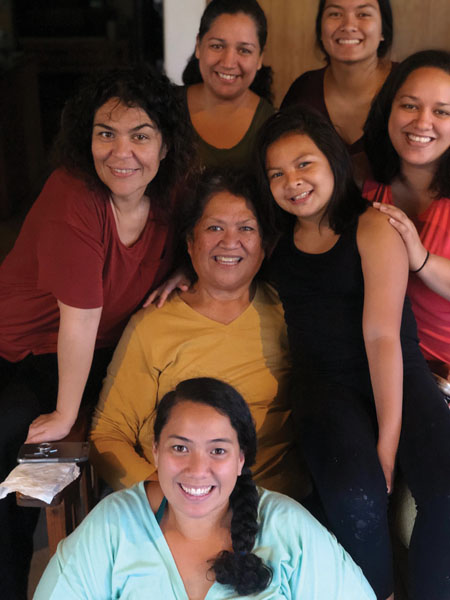
In 2011, Aunty Aloha had the privilege of furthering her ho‘oponopono training with renowned practitioners Lynette and Likeke (Richard) Paglinawan. She also started teaching Introduction to Ho‘oponopono at Hawai‘i Community College (HCC). In 2013, working with HCC’s office of continuing education, she assisted with a training program, teaching incarcerated men at Kulani Correctional Facility. She is presently employed by Keiki O Ka ‘Āina Family Learning Centers (KOKA), and before the pandemic, was facilitating a program at Hawai‘i Community Correctional Facility and Hale Nani.
Her leisure time is spent with hula. “When I was little, I went to learn hula at a well-known hālau, like my older sister did. She is now kumu status,” says Aunty Aloha. “In those days, they were very strict and walked around with a ruler. If you weren’t doing your steps right or your hands correctly, they would pa‘i [smack]. I thought, ‘Why should I do this and get pa‘i? I can get that at home.’”
“At age 50, I decided I wanted to go back to hula,” Aunty Aloha says. “My sister had a hālau, with a kupuna group of women ages 45–100. She and her alakai‘i [lead teacher] were inspired kumu, teaching the basics, and I felt very comfortable in the hālau because at every practice the hālau would open and close practices with pule.”
She has danced and competed with the group in hula competitions in Las Vegas, the Kūpuna Hula Festival in Keauhou, and Moku O Keawe Festival in Waikoloa. She loves to dance, and to share the beauty and energy, the “glow” of hula.
As we wind up our Zoom chat, Aunty Aloha’s adorable grandson Cedar comes in to say hello. “I love you,” she says. “And I’m talking now. OK?” He waves goodbye.
These days, most of Aunty Aloha’s work is done online. She presently co-facilitates a class for KOKA called “Ho‘ohiki Pilina,” designed to help teens learn how to build healthy relationships, and make healthy decisions for today and tomorrow.
“In society there are two kinds of people, the spoiled brat or the abused individual,” Aunty Aloha says. “Both are crying, ‘Help me!’” She puts out her open hands. “The Lord says, ‘Turn your hands over [she does] and go do. Go do, go do, go do…’ Then you say ‘OK, Heavenly Father, I did that. What else I gotta do?’ And you gotta listen. Then you wait. The hardest part is to wait. The Lord says, ‘I’m going to do it when I’m ready, not when you’re ready.’”
“In the meantime,” she says with a smile, “It’s all experience.”
Yes it is. Mahalo, Aunty Aloha. ❖
Today’s ho‘oponopono is based on an ancient practice of healing illness and restoring family harmony. When there’s an issue, a facilitator is called in to help, using prayer, guided conversation, acceptance of responsibility, and making amends. Modern practice may look different from its ancient ancestor, but the basic elements are essentially the same:
Opening pule (prayer).
‘Oia‘i‘o (the very spirit of truth). Leaders call on everyone, including themselves, to look first within, and then share as openly and truthfully as possible.
Kūkulu kumuhana (pooling of strengths). State the problem to be solved, concentrate thoughts on one person or one problem.
Mahiki (to pry or peel off). Stripping away the layers of a problem, like peeling an onion.
Identifying hala (cord that binds an offender to a victim) and hihia (entanglement, web of hala knots that may bind the whole family).
Ho‘omalu (complete silence), a pause called by the leader to let things settle before continuing.
Mihi (repentance). Honest confession(s) to God, aumakua, and each other.
Kala (loosen or untie). Release the strings of blame. Make restitution or arrange to do so. “Ke kala aku nei ‘au ia ‘oe a pela noho‘i ‘au e kala ia mai ai,” (“I unbind you from the fault, and thus may also be unbound from it.”)
Closing pule.
Pani (ritual bit of food). In the past, families would sacrifice a pig or a chicken. Today, they have a meal together.**
*www.keolamagazine.com/people/howard-pea/
** The process of ho‘oponopono is described in detail, in Nānā I Ke Kumu (Look to the Source): Volume 1 and 2, by Mary Kawena Pukui, with Catherine A. Lee, E.W. Haertig, and Mrs. Marian Hartig in 1972 as a project for Queen Lili‘uokalani Children’s Center. The text is available in full at www.ulukau.org
